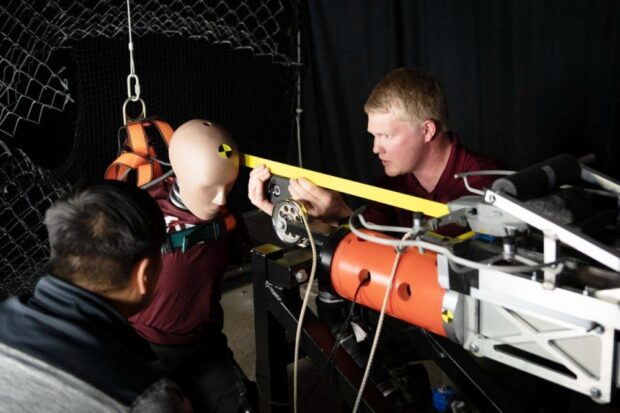Federal approvals for flying drones over people have been advanced through Virginia Tech research. As of April 5, the updated means of compliance established by the Virginia Tech Mid-Atlantic Aviation Partnership has been accepted by the Federal Aviation Administration (FAA) and published as a notice of availability in the federal register, establishing its availability for use.
These updated testing methods allow the use of parachutes when assessing potential failure modes, an important step for the drone industry.
Parachutes are one potential method of mitigating the risk to people on the ground. To be utilized in the means of compliance, parachutes must be tested according to ASTM International’s Standard Specification for Small Unmanned Aircraft System Parachutes.
The drone industry was provided a pathway for flying over people with the FAA’s establishment of the rule in 2021, which allows for flights over people, but only after a drone is tested to show it complies with the rule.
Later that year, the Mid-Atlantic Aviation Partnership established the first means of compliance for operations over people to be accepted by the FAA, and soon after, the first drone passed the tests. These testing methods were developed in partnership with the Virginia Tech Center for Injury Biomechanics to ensure aircraft do not exceed comparative injury limits and do not contain exposed rotating parts capable of lacerating human skin. They provided an understanding of what’s required to operate over people and the means of compliance provided a firm process to meet those requirements.
“We’re honoured to be part of what the FAA is doing to ensure drones can be safely operated over people, ” Mid-Atlantic Aviation Partnership Director Tombo Jones said. “Years of research has led us to this point, and this step forward opens the aperture for the number of drones that may be able to fly over people. ”
Source: Press Release

